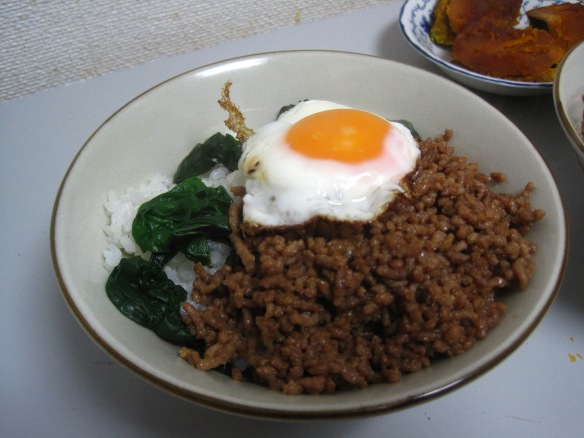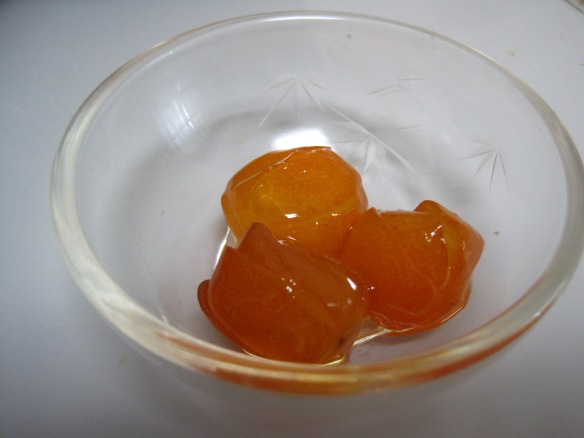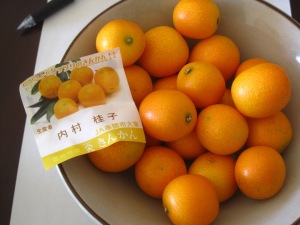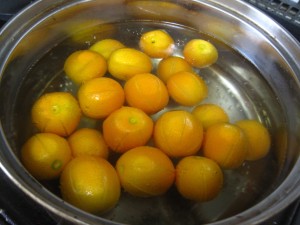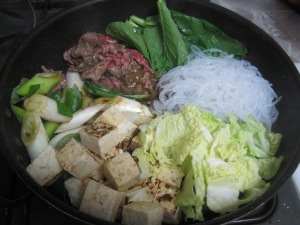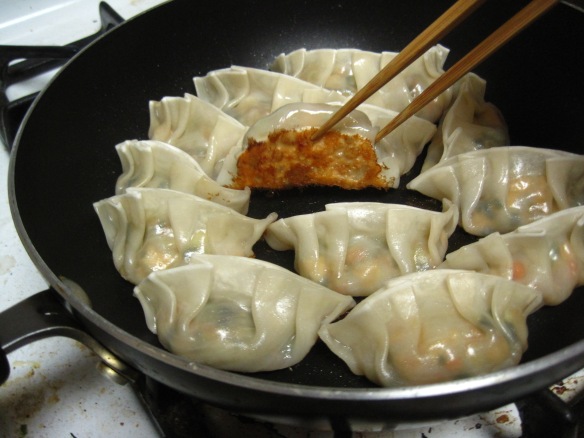
Gyoza (餃子) is the Japanese word for dumplings. They consist of a thin wrapper and a filling of meat and/or vegetables, and may be cooked by steam-frying, boiling, or deep-frying. Gyoza can come in almost infinite varieties, so feel free to adjust as you like. This is my basic recipe, but it often varies depending what’s on sale, in season, or around my kitchen.
Ingredients (serves 3-4)
125g (1/4 lb) ground pork
1 cup finely sliced cabbage or hakusai (Napa cabbage)
1/2 cup finely sliced veggies (nira/garlic chives, green onions, other greens, carrots, etc)
1 clove garlic, minced
2 tsp chopped fresh ginger
1 tsp soy sauce
1/2 tsp rice vinegar
1 tsp sugar
1/4 tsp sesame oil
salt and pepper to taste
24 gyoza wrappers (or round dumpling wrappers)
Optional (for dipping sauce): Additional soy sauce, rice vinegar, sesame oil, and/or chili oil
Instructions
In a medium bowl, mix all ingredients (except wrapper) well. (It can help to use your hands.) Tip: it’s a good idea to check the flavor, so you can microwave about 1 tsp of the filling until cooked and taste it. That’s what your finished dumplings will taste like, so adjust the seasoning to your taste.
Fill each dumpling with 1/2 tbsp of the filling. Dip a finger in water and draw a line halfway around the edge of the wrapper, and fold. You can find videos showing you how to fold gyoza online if you haven’t done it before, or look at the pictures below for an idea. If it’s your first try, it’s best to check out a video, or have someone show you.
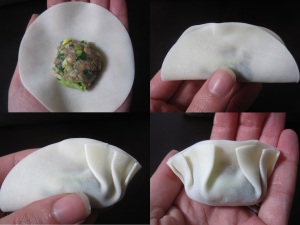 Once all the dumplings are folded, you can cook them. Gyoza can be pan-fried, boiled, or deep-fried. The first way is the most common, and what I usually do at home, so I’ll give the instructions here. Boiling and deep-frying are pretty self-explanatory. You will need a frying pan that has a lid.
Once all the dumplings are folded, you can cook them. Gyoza can be pan-fried, boiled, or deep-fried. The first way is the most common, and what I usually do at home, so I’ll give the instructions here. Boiling and deep-frying are pretty self-explanatory. You will need a frying pan that has a lid.
Place teaspoon or two of oil in a frying pan on medium heat and set the dumplings down in it. Leave a little space between them so they don’t stick together. You want the pleated edges sticking straight up. Let them cook for a minute or two, and then pour about 1/2 cup of water into the frying pan and put the lid on. (Remember, you’re pouring water onto hot oil, so it may splatter.)
Steam the dumplings for about 8 minutes. If all the water evaporates before then, add a little more. After 8 minutes, remove the lid and let the extra water boil off. You can check for doneness by poking one open with a chopstick and making sure there’s no pink in the meat. Finally, let the dumplings cook in the hot oil until the bottom gets crispy and brown (see the picture at the top of the post).
Serve immediately.
Optional dipping sauce: mix equal amounts of soy sauce and rice vinegar. Some people like to add oil as well; you can use sesame oil or chili oil (ラー油, raayu).
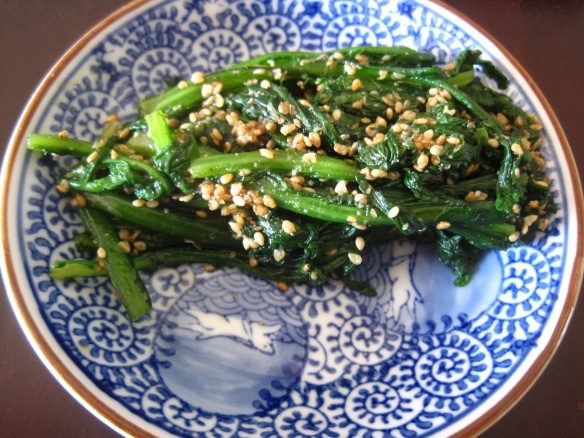 In Japanese, goma means ‘sesame’, and it is commonly used in all kind of cooking. This recipe is for a dressing called goma-ae which is sweet and salty, made with sesame, sugar, and soy sauce. It is great on all kinds of veggies, especially greens. In the picture above, I used shungiku, or chrysanthemum greens, but it’s also great on spinach, komatsuna, or other similar vegetables. It makes a great side dish. I especially like the contrast when eaten with something spicy.
In Japanese, goma means ‘sesame’, and it is commonly used in all kind of cooking. This recipe is for a dressing called goma-ae which is sweet and salty, made with sesame, sugar, and soy sauce. It is great on all kinds of veggies, especially greens. In the picture above, I used shungiku, or chrysanthemum greens, but it’s also great on spinach, komatsuna, or other similar vegetables. It makes a great side dish. I especially like the contrast when eaten with something spicy.
